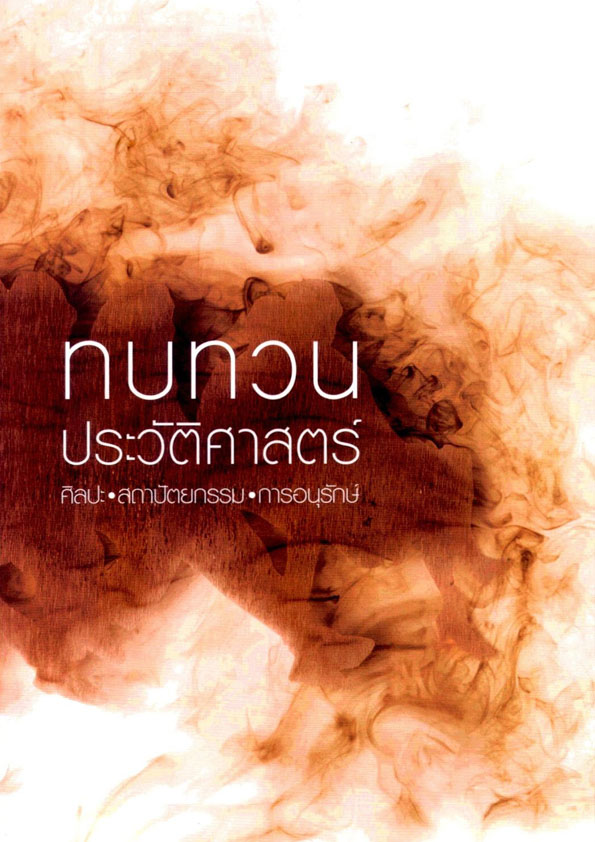ความสัมพันธ์ระหว่างสถาปัตยกรรมอินโด-เปอร์เซียกับรูปแบบสถาปัตยกรรมในรัชสมัยสมเด็จพระนารายณ์ที่พระนารายณ์ราชนิเวศน์เมืองลพบุรี The Relationship between the Indo-Persian Architectures and the King Narai’s Architectural Styles in Phra Narai Palace, Lopburi
Main Article Content
Abstract
บทคัดย่อ
บทความเรื่องนี้มีวัตถุประสงค์เพื่ออธิบายและวิเคราะห์ความสัมพันธ์ระหว่างสถาปัตยกรรมอินโด-เปอร์เซียกับรูปแบบสถาปัตยกรรมไทยในรัชสมัยสมเด็จพระนารายณ์ที่เมืองลพบุรี จากการศึกษาพบว่ามีแบบแผนที่สอดคล้องกันทั้งด้านการวางผังเมือง ผังพระราชวัง รูปแบบ องค์ประกอบทางสถาปัตยกรรม และลักษณะทางภูมิสถาปัตยกรรม โดยผังเมืองลพบุรีในรัชสมัยสมเด็จพระนารายณ์ได้รับอิทธิพลจากเมืองป้อมปราการแบบอินโด-เปอร์เซียที่เน้นการป้องกันเมืองจากการโจมตีภายนอก สอดคล้องกับพระบรมราโชบายของสมเด็จพระนารายณ์ที่ทรงใช้ลพบุรีเป็นยุทธศาสตร์ป้องกันต่อต้านและการก่อกบฏ การจัดวางองค์ประกอบภายในเมือง ได้แก่ พระราชวัง สวน แหล่งน้ำสำรอง ตลอดจนอาคารสถานที่ราชการมีแบบแผนคล้ายกับผังเมืองหลวงอิสฟาฮานชองอิหร่านในสมัยราชวงศ์ซาฟอวี และเมืองป้อมปราการในรัฐสุลต่านแห่งเดคคานของอินเดีย
สถาปัตยกรรมที่พระนารายณ์ราชนิเวศน์ เมืองลพบุรี แสดงถึงแบบแผนที่ได้รับอิทธิพลส่วนหนึ่งจากสถาปัตยกรรมอินโด-เปอร์เซีย ในคริสต์ศตวรรษที่ 16-17 สอดคล้องกับหลักฐานเอกสารเปอร์เซียซึ่งกล่าวว่า สถาปนิกและช่างฝีมือชาวอิหร่านและอินเดียมีส่วนร่วมในการก่อสร้างเมืองลพบุรีและพระราชวังให้กับสมเด็จพระนารายณ์ บทบาทดังกล่าวดำรงอยู่ก่อนที่ช่างชาวตะวันตกจะเข้ามาแทนที่ในช่วงปลายรัชกาล และแสดงให้เห็นการผสมผสานระหว่างวัฒนธรรมไทยกับวัฒนธรรมอิสลามแบบอินโด-เปอร์เซีย ซึ่งทำให้เกิดแบบแผนสถาปัตยกรรมอันเป็นเอกลักษณ์ในรัชสมัยสมเด็จพระนารายณ์
Abstract
This article aims to explain and analyze the relationship between the Indo-Persian architecture and the Thai architectural style in the reign of King Narai in the city of Lopburi. The studies found the consistent patterns of urban planning, palace layout, architectural elements and landscapes. Lopburi’s city plan in the reign of King Narai was influenced by the Indo-persian fortress cities planning that were focused on the protection of the cities from external attacks, in line with the royal policy of King Narai to establish Lopburi as a defense strategy against the oppositions and the rebellions. The layout of architectural components within the city for example the palace, parks, water reservoirs as well as government buildings were resembled with Isfahan, the capital city of Iran in the age of Safavid dynasty and the fortress cities of the Deccan Sultanates on India.
The King Narai Palace’s architecture in Lopburi showed the pattern that was influence from the Indo-Persian architecture in the 16-17th century. It was conformed to the Persian’s record that the Iranian and the Indian architects and the craftsmen were involved in the construction of Lopburi city and the King Narai’s palace. Such roles existed before Western technicians were replaced in the late of King Narai’s reign. The relationships showed a combination between Thai and Indo-Persian Islamic culture, resulting in unique patterns of the Thai Architecture in the reign of King Narai.
